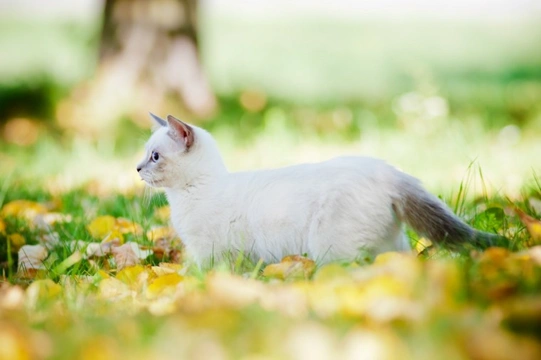
Why are some in-demand and popular cat types unrecognised by the GCCF?
Most people could name a few pedigree cat breeds if put on the spot, particularly when it comes to popular ones like the Siamese, Persian, and Ragdoll.
However, people who own pedigree cats and/or that have gone through the process of researching cat breeds to find the best fit for them could likely name several more popular cat types, such as the Scottish fold, and the Munchkin; respectively the 9th and 27th most popular recognised cat types in the UK, based on advert numbers here on Pets4Homes.
It might come as a surprise to some cat lovers, therefore, to learn that the latter two cats – the Scottish fold and the Munchkin – aren’t actually recognised as pedigree cats at all by the GCCF, which is the UK’s overall umbrella registry and showing organisation for pedigree cat breeds.
Whilst there are any number of other cat registries operating in specific countries and internationally as a whole that do recognise many cat types that the GCCF does not, in the UK, GCCF recognition and registration is considered to be the benchmark standard for pedigree status.
The GCCF recognises and registers a total number of forty different cat breeds; and yet there are over 60 recognised cat types found in the UK, and whilst not all of them are common, they are well-known enough and deliberately bred for enough significant uniform traits as to have breeding programmes in place and specific type/breed names.
With this being the case – around a third more identifiable domestic cat types found in the UK than are eligible for GCCF registration – you might wonder why the GCCF does not in fact recognise and register these other cats.
There are multiple potential reasons for this, and for some such cat types, only one specific reason will apply, whilst for others there are apt to be several reasons; and below, we’ll outline what some of them might be, and the sort of factors that lead to the GCCF failing to recognise or refusing to register a cat breed. Read on to learn more.
The breed is still in formation
Whilst the GCCF might formally refuse to register a certain cat type and take a proactive stance against it, some breeds are not so much refused as unrecognised. This means that they might, in future, be eligible for and approved for GCCF recognition, but at the present time, the breed is still in formation.
Put simply, this means that it is too new, and has not been around for long enough, and does not have enough known about it, for the GCCF to be able to assess it for consideration and approve or deny recognition.
There isn’t a large enough population of the type
For a cat type to be recognised and accepted for registration, one of the criteria it needs to fulfil is for there to be sufficient cats of the type around to form the foundations of a viable and self-sustaining breed population, without the need for a high degree of inbreeding, nor outcrossing to other breeds or non-pedigree cats.
Building a breed population takes time, and once more, might mean that recognition is on the cards in the future.
The breed population isn’t stable and uniform
Anyone can point to a cat and say that it is a certain named type that isn’t a recognised pedigree, but for a type to be viable as a recognised breed, the population of cats called by the breed name must be stable and uniform and have enough in common to make them obvious members of the group.
Whilst no two cats are the same and naturally, there is variance within every pedigree breed in terms of things like permitted colours and size ranges, the parameters that a breed can vary between have to be fixed, and fairly narrow.
If this is not the case, the cat type or named type isn’t uniform enough, or does not display enough stability of its uniformity, to constitute a viable breed.
The UK population is too small
There are some cat types that the GCCF may recognise as pedigrees abroad, but the number of them in the UK itself may be too small to make for a viable breed population and so, to be eligible for registration in the UK.
The type comes accompanied by inherent health issues
If one of the traits that makes a cat type a member of that type by design; or that can and does occur in some cats of the type repetitively, even if not in all such cats – results in health issues, welfare concerns, or otherwise sometimes or always harms or disadvantages cats that possess it, the GCCF will not recognise it. This is the cause for disqualification for both the Munchkin and Scottish fold cat types.
The type exhibits genetic mutations
A genetic mutation does not always result in a health or welfare issue in the same way as the munchkin’s short legs or the Scottish fold’s folded ears do.
The Pixie Bob, for instance, another unrecognised cat type has six toes, which is a genetic mutation that does not in and of itself cause physical problems for said cats. However, it is still a mutation that is needless, and would not be self-sustaining in nature, and mutations of this type tend to disbar cats from registration if they’re classed as a trait of the would-be breed, as they would be bred out in the wild and provide no advantage for the cat.



